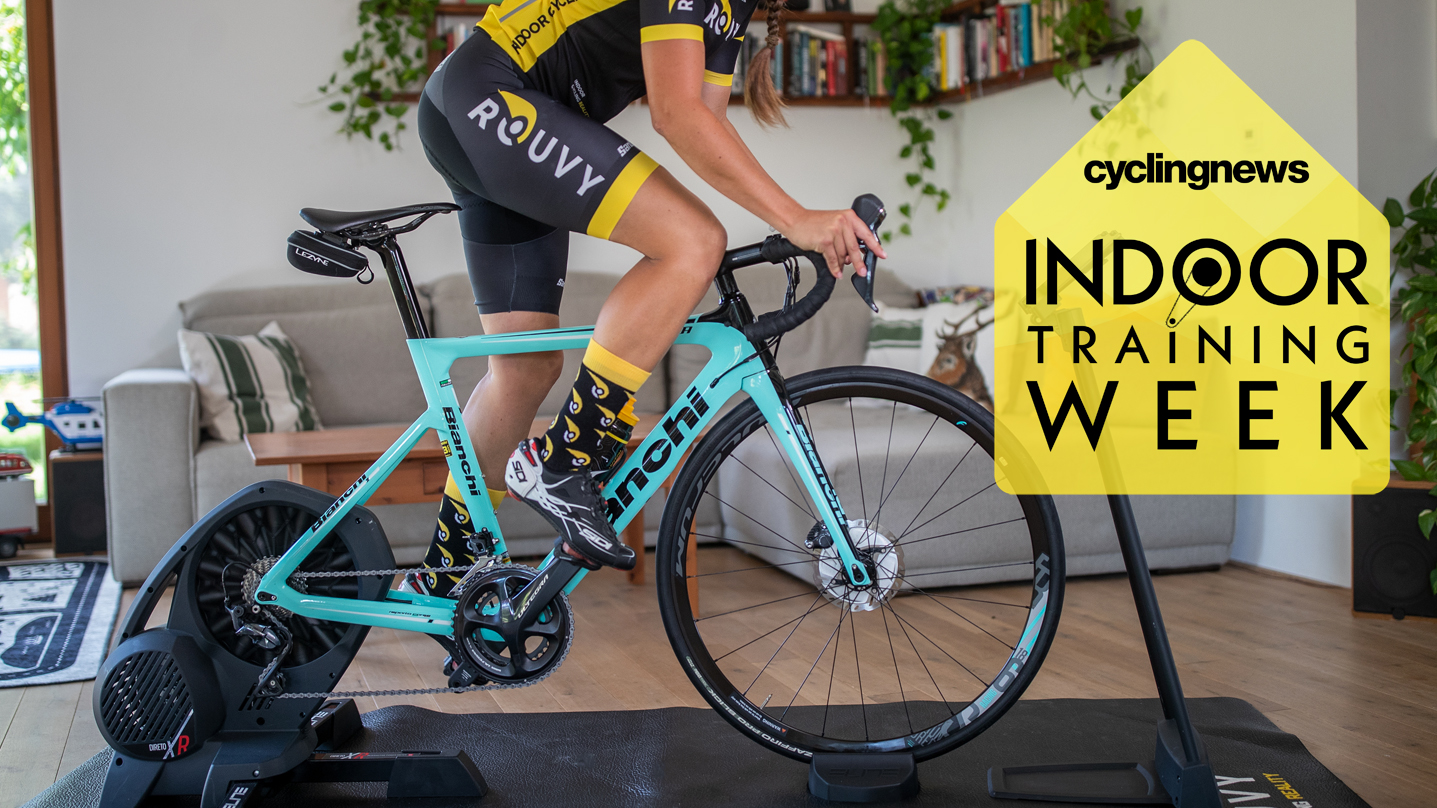Benefits of indoor cycling: All the great things that riding indoors can do for you
Why taking your training indoors this winter might be the best decision you make

With the winter months fast approaching in the Northern Hemisphere, temperatures have started to steadily drop, and the colder, wetter weather is fast approaching. Add to that the poor light and visibility that usually accompanies this time of year, and it’s no surprise that we’re starting to see more cyclists turn to indoor cycling.
Almost any cyclist, from complete beginner to seasoned professional, can benefit from training indoors, thanks to the latest technological advances in creating the best turbo trainers, and developing the best indoor cycling apps. Nowadays, riding indoors is much more enjoyable and more easily accessible for all cyclists.
If you're still not convinced that it's for you, then here are some of the key benefits of indoor cycling and how you could apply them to your training regime.
Time efficiency
Without a doubt, the biggest benefit of indoor cycling is time efficiency, as it allows you to squeeze in a session where it may not have been viable if you were riding outdoors. Overall this could lead to you doing more sessions than before, because of the time you're saving, or at least spending less time getting ready and more time actually riding.
If you don't believe us, think about this: when riding outdoors, as much as 30 per cent of your training time could be spent without applying any power to the pedals. Much of it would be spent free-wheeling, braking, and sitting at junctions or traffic lights. Cycling indoors, on the other hand, provides you with a constant load, where you can maximise the time available to train and not waste a moment.
The constant resistance faced when riding indoors could provide a greater stimulus compared to the same session being completed outdoors. We could therefore reduce the total training time by 10–15 per cent and achieve the same results.
A safer environment away from the elements
Indoor cycling provides you with a platform to beat the elements. Riding outdoors always comes with a safety risk, especially in dark, wet conditions. Training indoors allows you to do all your training sessions from the comfort of your own home or local gym, saving you from having to put yourself at risk in the elements.
The latest race content, interviews, features, reviews and expert buying guides, direct to your inbox!
You also wouldn’t have to compete with the worst winter weather, like rain, wind, snow, or ice. While the best waterproof cycling jacket might get you through some of it, there comes a point where it simply becomes unpleasant. Take these sessions indoors to ensure you keep the training going.
Precision
The best turbo trainers are all built with relatively accurate power meters now, which along with the best indoor cycling apps allow us to ensure we follow our training programs with a heightened level of precision.
We can conduct our own testing (recommended with the supervision of a coach) and set up training zones specific to yourself. You can then follow a power-based training programme, allowing you or your coach to get the most out of your training availability.
When you train indoors you are now in control of the variables. This greatly improves the specificity of your training. The heightened level of control is valuable in improving the precision and quality of each session that you can produce.
Consistency
When it comes to any form of training, consistency is king! Indoor cycling benefits from being very structured and focused which makes it easier to remain consistent with your training. It allows you to keep your training on track regardless of the elements outside, and keeps you on your path towards achieving your goals.
Every session is important in a cycling training plan, from the easy zone 2 spins to the super hard high-intensity interval sessions. Training indoors allows you to consistently complete your sessions as there is very little external influence on them. All sessions start and end with you being in control of the outcome.
It’s fun and interactive
Online training platforms have had a massive influence on indoor cycling, making it enjoyable. Gone are the days of having to stare at the garage door while slogging through your training session for the day.
We’re now able to join a ride where people from all over the world are participating, make some new friends and just have a good time while riding our bikes. Enjoying your training keeps your motivation up, which is vitally important in keeping your training consistent.
Another bonus is there is always a race that you can enter if you’re looking to get some bragging rights over your mates or just want to put yourself to the test.
The benefits of indoor cycling far outweigh any negatives that you may be able to think of. While the focus is not to turn anyone away from riding outdoors, indoor cycling is there to complement your outdoor riding. Go give it a try if you haven’t already, and see what you’ve been missing out on.
Jarred Salzwedel completed his Honours degree in Sports Science at the Nelson Mandela Metropolitan University in 2013. His Master's degree focused on investigating training adaptations to differing high-intensity interval training programmes in cyclists.
He has raced both on the road and track at a National level in the Junior ranks which led to his interest in the science behind training and conditioning, as well as his passion to help athletes optimise their performance.
Jarred owns and manages Cycle Dynamic Coaching - a coaching platform that looks after and advises some of South Africa’s top Road and Track cyclists. He has extensive knowledge in exercise physiology having previously focused on the physiological testing of endurance athletes.
